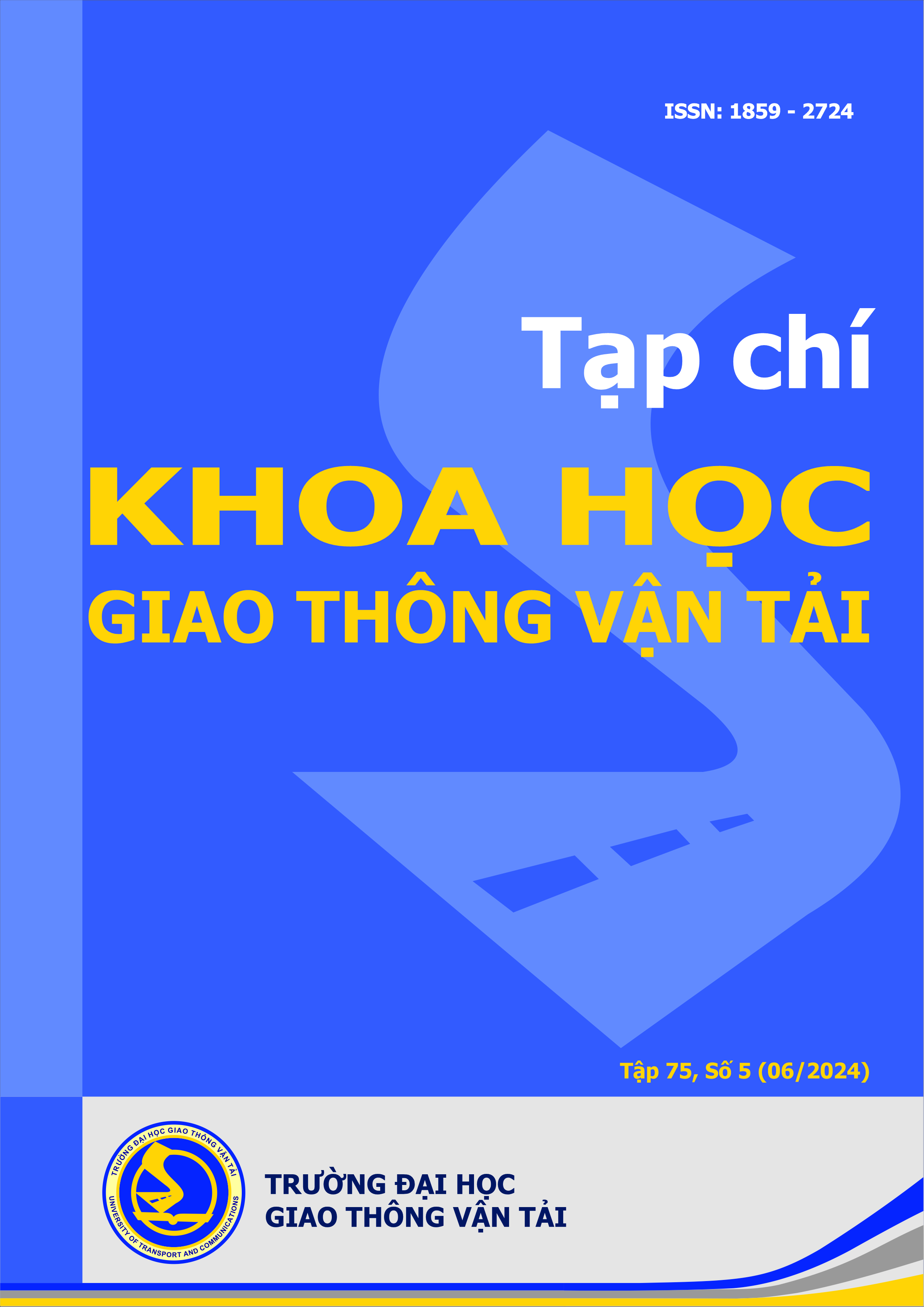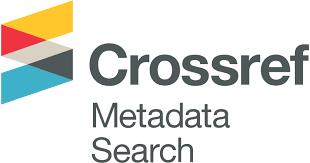Mô phỏng số ứng xử của bê tông cốt sợi thép bằng phương pháp trường pha kết hợp lý thuyết miền kết dính
Email:
quannh_ktxd@utc.edu.vn
Từ khóa:
phương pháp trường pha, bê tông cốt sợi thép, miền tiếp xúc, bong tách và vết nứt bắc cầu
Tóm tắt
Bê tông cốt sợi thép là một loại bê tông đặc biệt trong đó các sợi thép được phân bố ngẫu nhiên trong bê tông. Nhờ sự có mặt của các sợi thép, thông qua cơ chế bong tách và vết nứt bắc cầu, lực vẫn truyền được trong bê tông sau khi vết nứt xuất hiện, từ đó làm tăng tính dẻo, tăng khả năng hấp thụ năng lượng cho bê tông. Bài báo nhằm mục đích trình bày mô hình mô phỏng mới kết hợp lý thuyết trường pha với lý thuyết miền kết dính nhằm mô phỏng hiện tượng bong tách và vết nứt bắc cầu qua sợi thép. Trong phương pháp này, vết nứt và miền tiếp xúc được miêu tả bằng một trường vô hướng nhận giá trị từ 0 đến 1. Bước nhảy chuyển vị do bong tách ở miền tiếp xúc được miêu tả thông qua một trường chuyển vị phụ thêm. Nhờ đó, các quy luật ứng xử ở miền tiếp xúc được dễ dàng tích hợp vào mô hình. Kết quả của mô hình mô phỏng cho thấy ảnh hưởng của các tham số của miền tiếp xúc tới sự lan truyền của vết nứt. Đồng thời, mô hình mô phỏng cho phép miêu tả một cách trực quan hiện tượng bong tách và bắc cầu của sợi thép, từ đó cho thấy được vai trò của sợi thép trong việc tăng tính dẻo cho bê tông. Mô hình mô phỏng cũng cho thấy ảnh hưởng phương của sợi thép tới khả năng chịu lực của mẫuTài liệu tham khảo
[1]. R. I. Gilbert RI, Gilbert, E.S. Bernard, Post-cracking ductility of fibre reinforced concrete linings in combined bending and compression, Tunnelling and Underground Space Technology, 76 (2018) 1–9. https://doi.org/10.1016/j.tust.2018.02.010
[2]. S.M. Islam, R.R. Hussain, Md.A.Z. Morshed, Fiber-reinforced concrete incorporating locally available natural fibers in normal- and high-strength concrete and a performance analysis with steel fiber-reinforced composite concrete, Journal of Composite Materials, 46 (2012) 111–122. https://doi.org/10.1177/0021998311410492
[3]. Y.M. Abbas, M.I Khan M, Fiber–Matrix Interactions in Fiber-Reinforced Concrete: A Review, Arab J Sci Eng 41 (2016) 1183–1198. https://doi.org/10.1007/s13369-016-2099-1
[4]. R.V. Balendran, F.P. Zhou, A. Nadeem, A.Y.T. Leung, Influence of steel fibres on strength and ductility of normal and lightweight high strength concrete, Building and Environment, 37 (2002) 1361–1367. https://doi.org/10.1016/S0360-1323(01)00109-3
[5]. M.R. Carvalho, J.A.O. Barros, Y. Zhang, D. Dias-da-Costa, A computational model for simulation of steel fibre reinforced concrete with explicit fibres and cracks, Computer Methods in Applied Mechanics and Engineering, 363 (2020) 112879. https://doi.org/10.1016/j.cma.2020.112879
[6]. L.A. Le, G.D. Nguyen, H.H. Bui, A.H. Sheikh, A. Kotousov, Incorporation of micro-cracking and fibre bridging mechanisms in constitutive modelling of fibre reinforced concrete, Journal of the Mechanics and Physics of Solids, 133 (2019) 103732. https://doi.org/10.1016/j.jmps.2019.103732
[7]. D. Fanella,D. Krajcinovic, Continuum Damage Mechanics of Fiber Reinforced Concrete, Journal of Engineering Mechanics, 111 (1985) 995–1009. https://doi.org/10.1061/(ASCE)0733-9399(1985)111:8(995)
[8]. X. Peng X, C. Meyer, A continuum damage mechanics model for concrete reinforced with randomly distributed short fibers, Computers & Structures, 78 (2000) 505–515. https://doi.org/10.1016/S0045-7949(00)00045-6
[9]. R. Hameed R, A. Sellier, A. Turatsinze, F. Duprat, Metallic fiber-reinforced concrete behaviour: Experiments and constitutive law for finite element modeling, Engineering Fracture Mechanics, 103 (2013) 124–131. https://doi.org/10.1016/j.engfracmech.2012.11.022
[10]. V.M.C.F Cunha, J.A.O Barros, J.M. Sena-Cruz, A finite element model with discrete embedded elements for fibre reinforced composites, Computers & Structures, 94-95 (2012) 22–33. https://doi.org/10.1016/j.compstruc.2011.12.005
[11]. A. Pros, P. Diez, C. Molins, Modeling steel fiber reinforced concrete: numerical immersed boundary approach and a phenomenological mesomodel for concrete‐fiber interaction, Numerical Meth Engineering, 90 (2012) 65–86. https://doi.org/10.1002/nme.3312
[12]. F. J. F. Radtke, A. Simone, L. J. Sluys, A computational model for failure analysis of fibre reinforced concrete with discrete treatment of fibres, Engineering Fracture Mechanics, 77 (2010) 597–620. https://doi.org/10.1016/j.engfracmech.2009.11.014
[13]. Li. G, B.B. Yin, L.W. Zhang, K.M. Liew, A framework for phase-field modeling of interfacial debonding and frictional slipping in heterogeneous composites, Computer Methods in Applied Mechanics and Engineering, 382 (2021) 113872. https://doi.org/10.1016/j.cma.2021.113872
[14]. W. Tan W, E. Martínez-Pañeda, Phase field fracture predictions of microscopic bridging behaviour of composite materials, Composite Structures, 286 (2022) 115242. https://doi.org/10.1016/j.compstruct.2022.115242
[15]. Verhoosel CV, Verhoosel CV, De Borst R, A phase-field model for cohesive fracture: a phase-field model for cohesive fracture, International Journal for Numerical Methods in Engineering, 96 (2013) 43–62. https://doi.org/10.1002/nme.4553
[16]. T.T. Nguyen, J. Yvonnet, Q.-Z. Zhu, M. Bornert, C. Chateau, A phase-field method for computational modeling of interfacial damage interacting with crack propagation in realistic microstructures obtained by microtomography, Computer Methods in Applied Mechanics and Engineering, 312 (2016) 567–595. https://doi.org/10.1016/j.cma.2015.10.007
[17]. Lê Gia Khuyến, Nguyễn Hoàng Quân, Trần Bảo Việt, Mô hình mặt tiếp xúc không hoàn hảo trong bê tông cốt sợi: Bài toán một chiều, Tạp chí khoa học GTVT, 74 (2023) 1063-1074. https://doi.org/10.47869/tcsj.74.9.4
[18]. M. Pise, D. Brands, G. Gebuhr, M. Sarhil, J. Schröder, S. Anders, Elasto‐plastic phase‐field model for pullout tests of steel fiber embedded in high‐performance concrete: numerical calibration and experimental validation, Proc Appl Math and Mech, 201919 (2019) e201900255. https://doi.org/10.1002/pamm.201900255.
[2]. S.M. Islam, R.R. Hussain, Md.A.Z. Morshed, Fiber-reinforced concrete incorporating locally available natural fibers in normal- and high-strength concrete and a performance analysis with steel fiber-reinforced composite concrete, Journal of Composite Materials, 46 (2012) 111–122. https://doi.org/10.1177/0021998311410492
[3]. Y.M. Abbas, M.I Khan M, Fiber–Matrix Interactions in Fiber-Reinforced Concrete: A Review, Arab J Sci Eng 41 (2016) 1183–1198. https://doi.org/10.1007/s13369-016-2099-1
[4]. R.V. Balendran, F.P. Zhou, A. Nadeem, A.Y.T. Leung, Influence of steel fibres on strength and ductility of normal and lightweight high strength concrete, Building and Environment, 37 (2002) 1361–1367. https://doi.org/10.1016/S0360-1323(01)00109-3
[5]. M.R. Carvalho, J.A.O. Barros, Y. Zhang, D. Dias-da-Costa, A computational model for simulation of steel fibre reinforced concrete with explicit fibres and cracks, Computer Methods in Applied Mechanics and Engineering, 363 (2020) 112879. https://doi.org/10.1016/j.cma.2020.112879
[6]. L.A. Le, G.D. Nguyen, H.H. Bui, A.H. Sheikh, A. Kotousov, Incorporation of micro-cracking and fibre bridging mechanisms in constitutive modelling of fibre reinforced concrete, Journal of the Mechanics and Physics of Solids, 133 (2019) 103732. https://doi.org/10.1016/j.jmps.2019.103732
[7]. D. Fanella,D. Krajcinovic, Continuum Damage Mechanics of Fiber Reinforced Concrete, Journal of Engineering Mechanics, 111 (1985) 995–1009. https://doi.org/10.1061/(ASCE)0733-9399(1985)111:8(995)
[8]. X. Peng X, C. Meyer, A continuum damage mechanics model for concrete reinforced with randomly distributed short fibers, Computers & Structures, 78 (2000) 505–515. https://doi.org/10.1016/S0045-7949(00)00045-6
[9]. R. Hameed R, A. Sellier, A. Turatsinze, F. Duprat, Metallic fiber-reinforced concrete behaviour: Experiments and constitutive law for finite element modeling, Engineering Fracture Mechanics, 103 (2013) 124–131. https://doi.org/10.1016/j.engfracmech.2012.11.022
[10]. V.M.C.F Cunha, J.A.O Barros, J.M. Sena-Cruz, A finite element model with discrete embedded elements for fibre reinforced composites, Computers & Structures, 94-95 (2012) 22–33. https://doi.org/10.1016/j.compstruc.2011.12.005
[11]. A. Pros, P. Diez, C. Molins, Modeling steel fiber reinforced concrete: numerical immersed boundary approach and a phenomenological mesomodel for concrete‐fiber interaction, Numerical Meth Engineering, 90 (2012) 65–86. https://doi.org/10.1002/nme.3312
[12]. F. J. F. Radtke, A. Simone, L. J. Sluys, A computational model for failure analysis of fibre reinforced concrete with discrete treatment of fibres, Engineering Fracture Mechanics, 77 (2010) 597–620. https://doi.org/10.1016/j.engfracmech.2009.11.014
[13]. Li. G, B.B. Yin, L.W. Zhang, K.M. Liew, A framework for phase-field modeling of interfacial debonding and frictional slipping in heterogeneous composites, Computer Methods in Applied Mechanics and Engineering, 382 (2021) 113872. https://doi.org/10.1016/j.cma.2021.113872
[14]. W. Tan W, E. Martínez-Pañeda, Phase field fracture predictions of microscopic bridging behaviour of composite materials, Composite Structures, 286 (2022) 115242. https://doi.org/10.1016/j.compstruct.2022.115242
[15]. Verhoosel CV, Verhoosel CV, De Borst R, A phase-field model for cohesive fracture: a phase-field model for cohesive fracture, International Journal for Numerical Methods in Engineering, 96 (2013) 43–62. https://doi.org/10.1002/nme.4553
[16]. T.T. Nguyen, J. Yvonnet, Q.-Z. Zhu, M. Bornert, C. Chateau, A phase-field method for computational modeling of interfacial damage interacting with crack propagation in realistic microstructures obtained by microtomography, Computer Methods in Applied Mechanics and Engineering, 312 (2016) 567–595. https://doi.org/10.1016/j.cma.2015.10.007
[17]. Lê Gia Khuyến, Nguyễn Hoàng Quân, Trần Bảo Việt, Mô hình mặt tiếp xúc không hoàn hảo trong bê tông cốt sợi: Bài toán một chiều, Tạp chí khoa học GTVT, 74 (2023) 1063-1074. https://doi.org/10.47869/tcsj.74.9.4
[18]. M. Pise, D. Brands, G. Gebuhr, M. Sarhil, J. Schröder, S. Anders, Elasto‐plastic phase‐field model for pullout tests of steel fiber embedded in high‐performance concrete: numerical calibration and experimental validation, Proc Appl Math and Mech, 201919 (2019) e201900255. https://doi.org/10.1002/pamm.201900255.
Tải xuống
Chưa có dữ liệu thống kê

Nhận bài
01/05/2024
Nhận bài sửa
30/05/2024
Chấp nhận đăng
11/06/2024
Xuất bản
15/06/2024
Chuyên mục
Công trình khoa học
Kiểu trích dẫn
Lê Gia, K., Nguyễn Hoàng, Q., & Trần Bảo, V. (4400). Mô phỏng số ứng xử của bê tông cốt sợi thép bằng phương pháp trường pha kết hợp lý thuyết miền kết dính. Tạp Chí Khoa Học Giao Thông Vận Tải, 75(5), 1909-1922. https://doi.org/10.47869/tcsj.75.5.16
Số lần xem tóm tắt
170
Số lần xem bài báo
151









